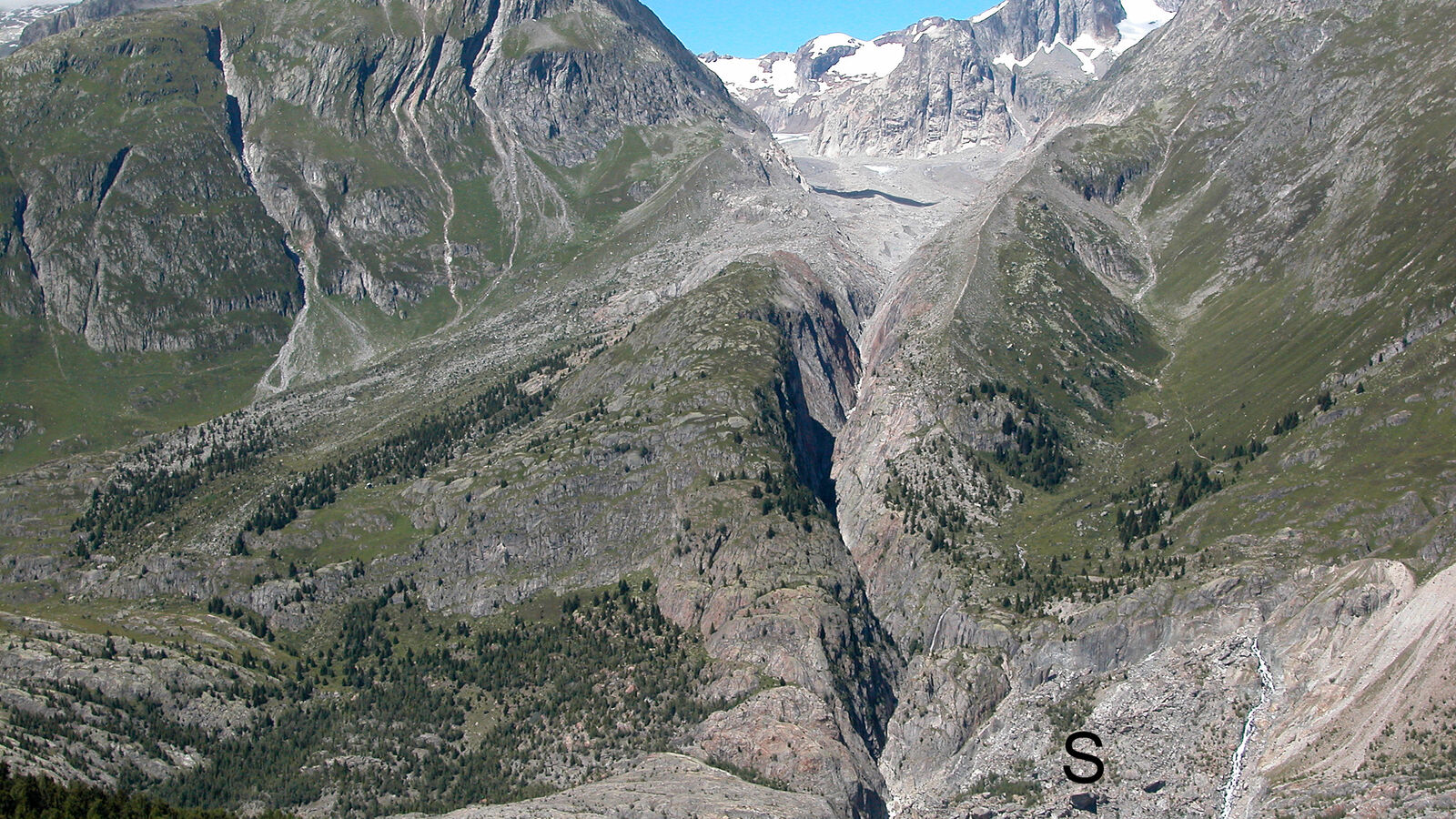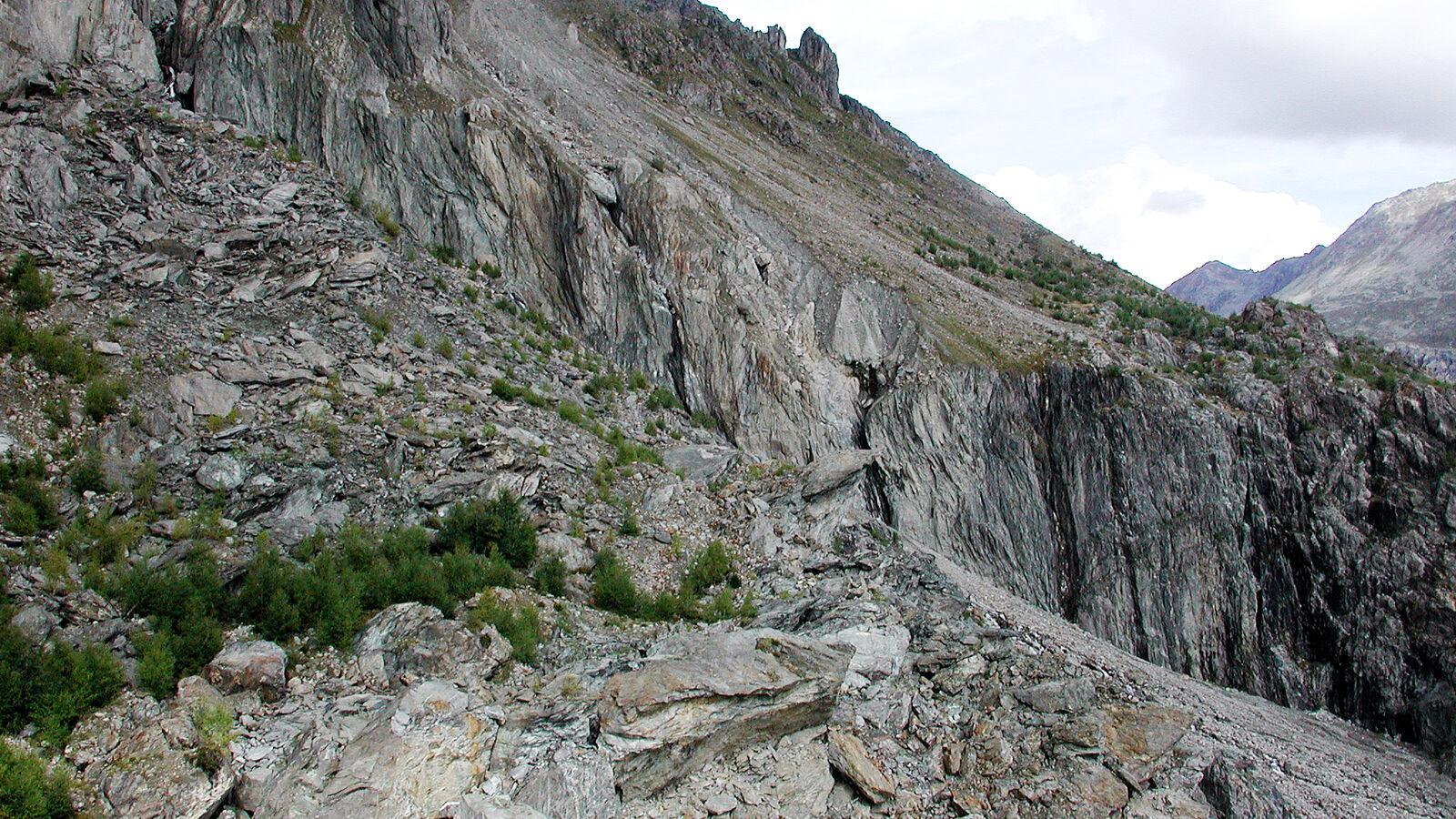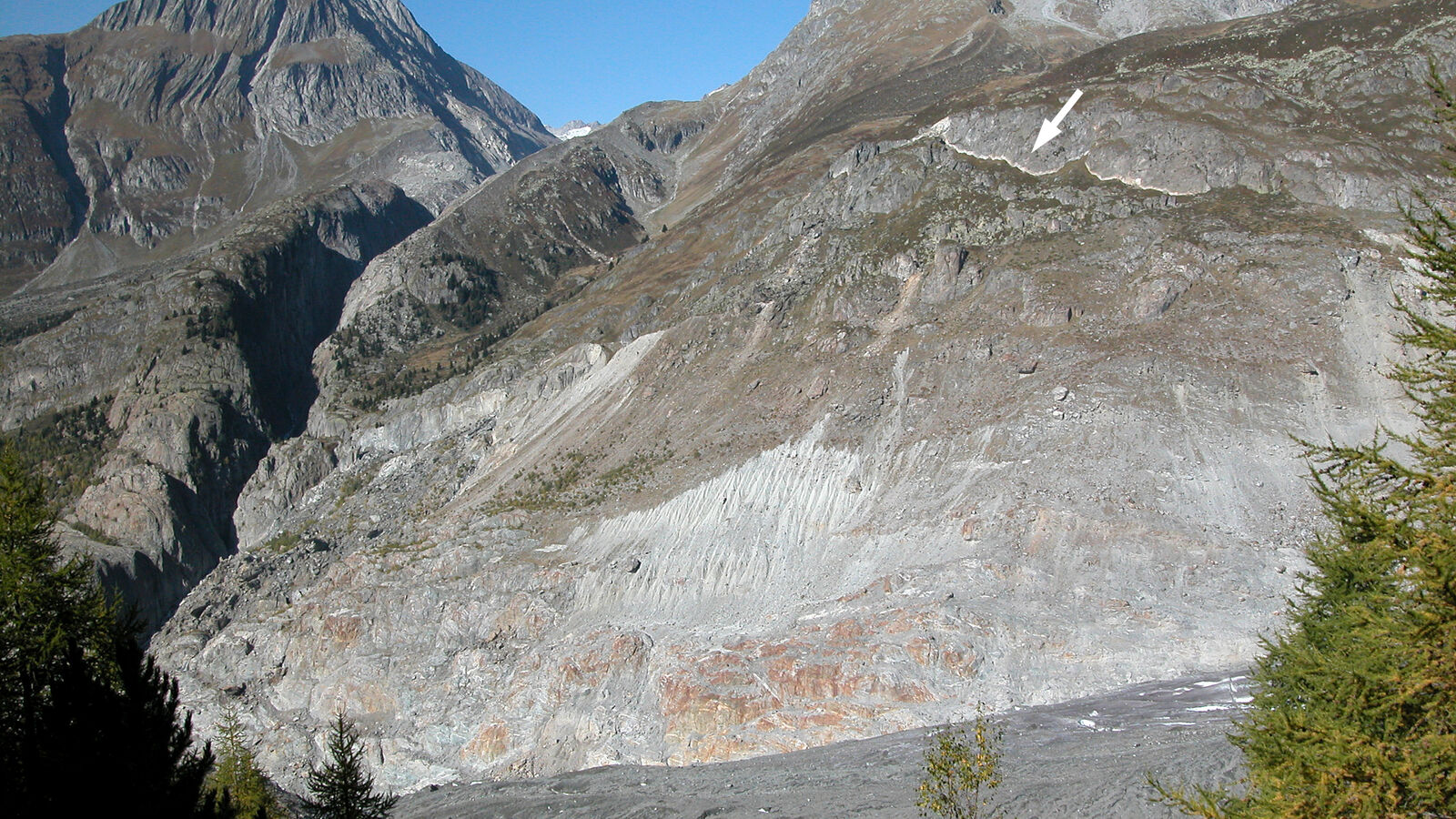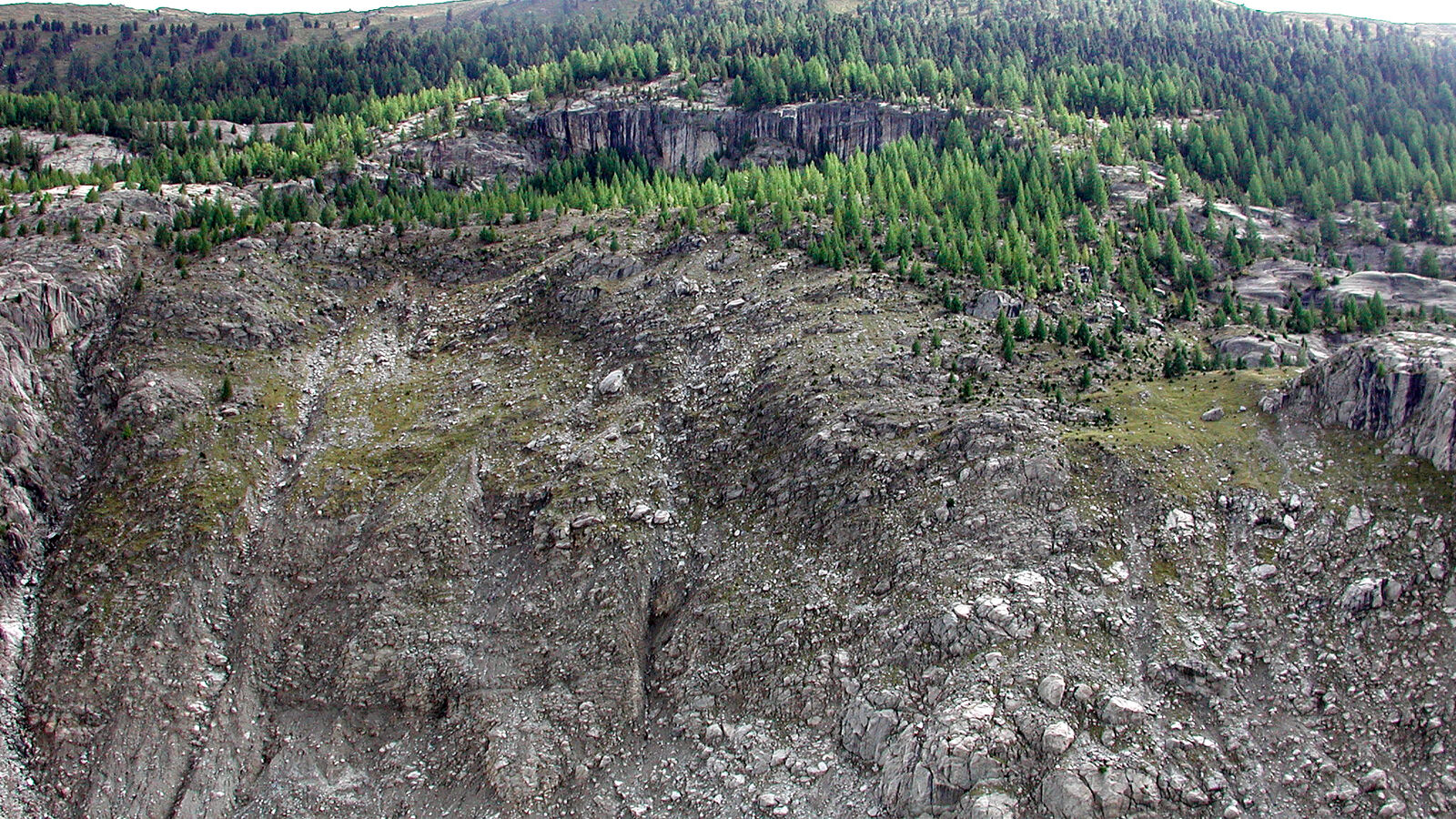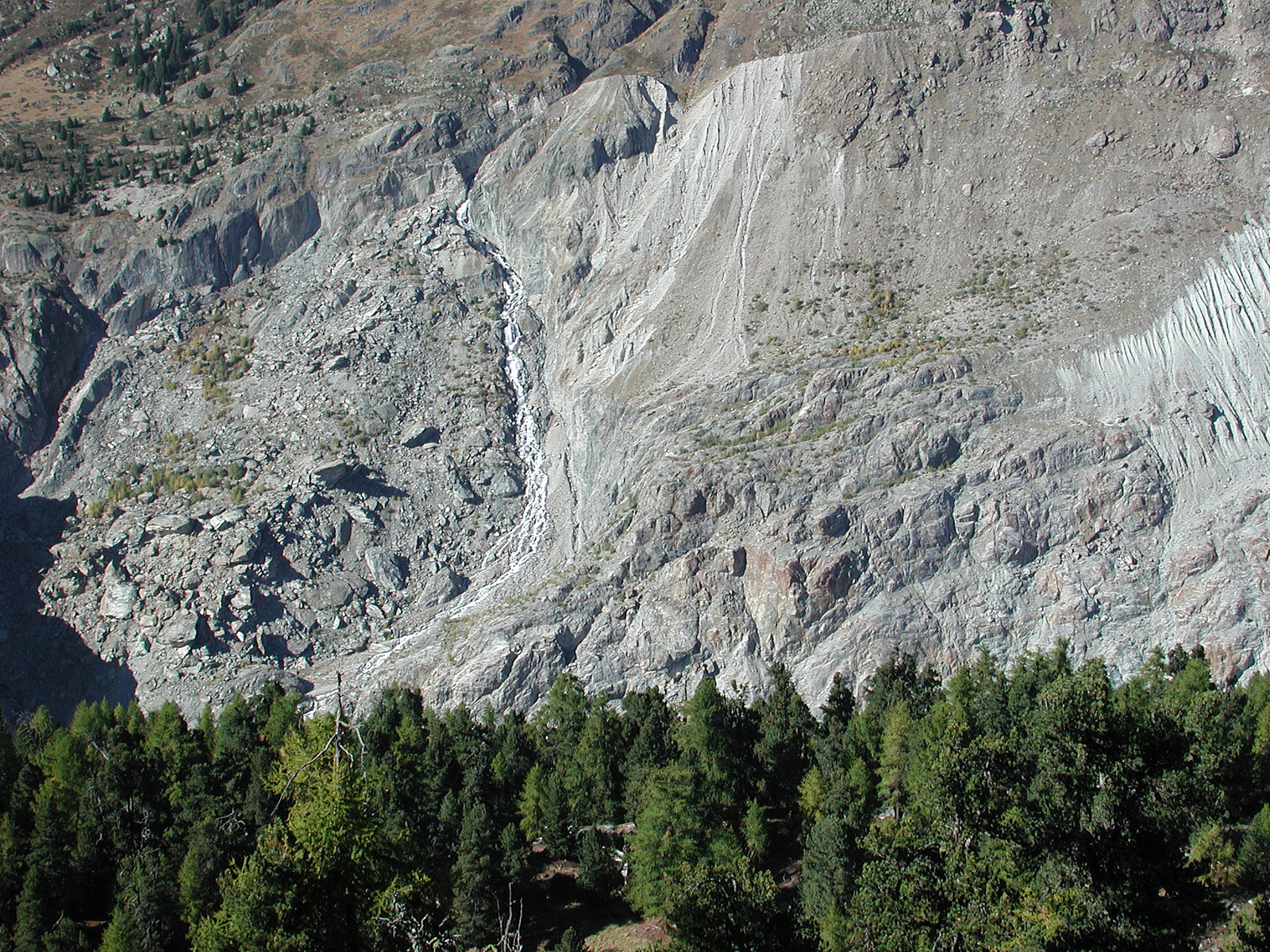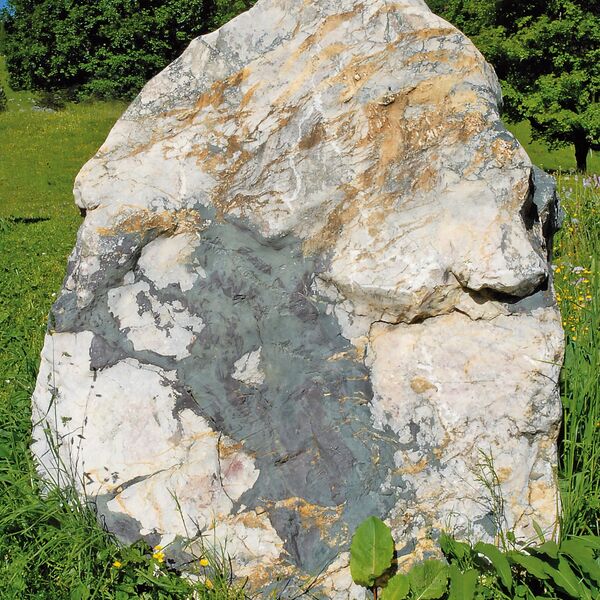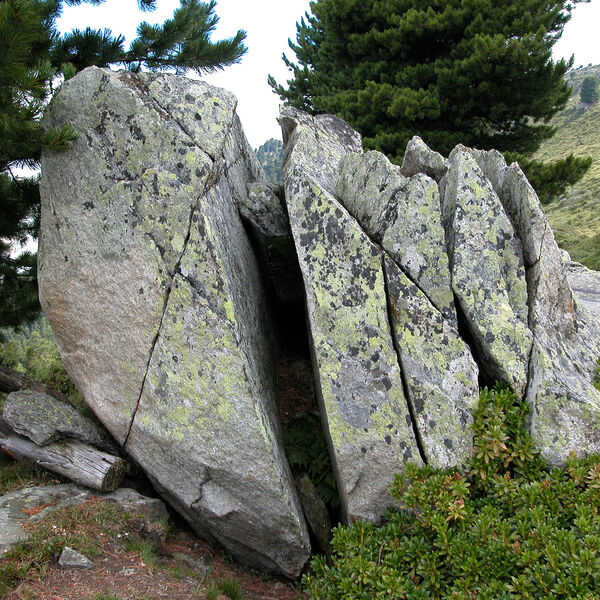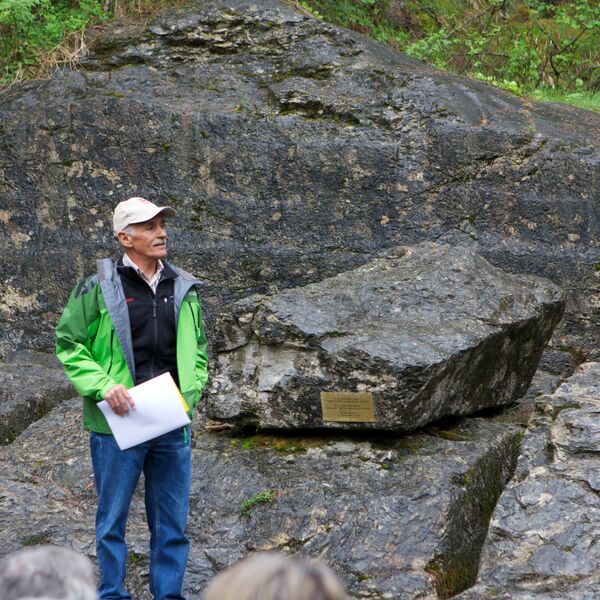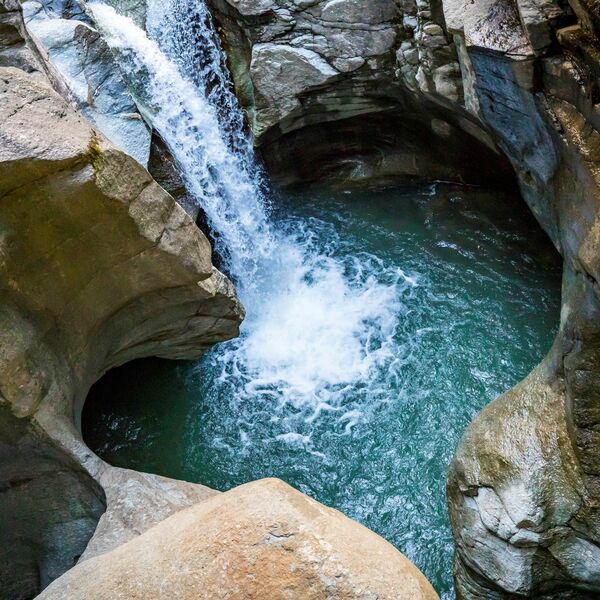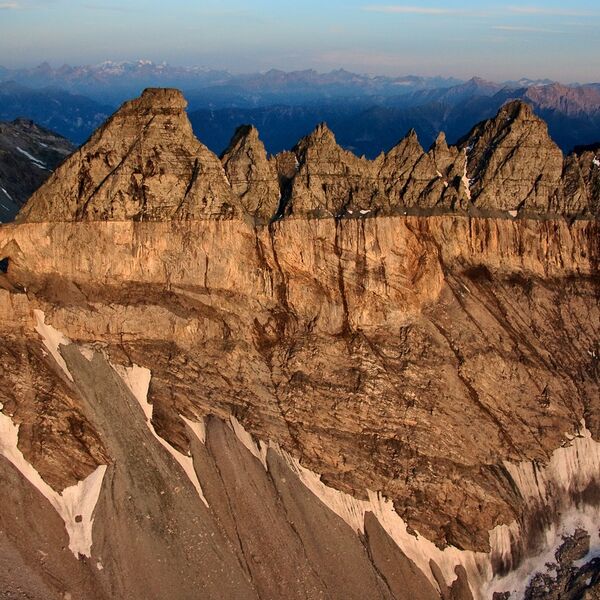Schweizer Alpen Jungfrau-Aletsch
Aussichtspunkt: Felssackungen am Grossen Aletschgletscher (Hohfluh)
Der Grossteil des Aletschgebietes besteht aus schiefgestellten Schiefern und Gneisen des Altkristallins, das 1,2 bis zwei Milliarden alt ist. Seit dem Ende der Kleinen Eiszeit um 1860 ist der Aletschgletscher sehr schnell zurückgeschmolzen. Im Zungenbereich verlor er während der letzten rund 150 Jahre über 300 m an Mächtigkeit und für die Talflanken ging das Eis als Widerlager verloren. An den steilen Talflanken entwickelten und entwickeln sich durch gravitative Bewegungen Hanginstabilitäten sowie klein- und grossräumige Sackungen. Die einst vom Gletscher bedeckten Felspartien sind zudem durch in Risse und Klüftungen eingedrungenes und gefrierendes Wasser (Frostsprengung) zerrüttet. Eine kleinräumige Sackung ereignete sich beim Tälli: Um 1966 hatte sich am Steilhang zwischen Driest- und Oberaletschbach über eine Breite von rund 350 Metern eine Abrissplatte geöffnet. Zunächst folgten Abschalungen und kleinere Felsausbrüche an der ausgeaperten Felswand. Schliesslich senkte sich der gesamte Felskörper zusehends und war von Rissen und Spalten durchsetzt. Der vollständige Zerfall des einst massigen Felskörpers war 1975 beendet und ein wirrer Trümmerhaufen blieb übrig.
Seit mindestens den 1970er-Jahren bewegt sich auf der rechten Talseite ein ca. 450’000 m2 grosser Hangabschnitt mit wenigen Zentimetern pro Jahr talwärts. Durch die Bewegung wurde unverwitterter Fels freigelegt, der sich als helles Band über ca. 250 Meter hinzieht und vom Aletschwald aus gut sichtbar ist. Auch unterhalb des Silbersandes befindet sich eine grössere Sackung, deren Alter jedoch nicht bekannt ist.
Eisströme im Aletschgebiet
Ein Beitrag von Alexandra.
Gletscherwelten
Ein Beitrag von Michelle.
